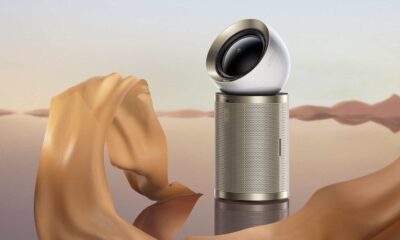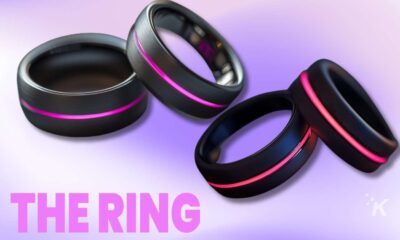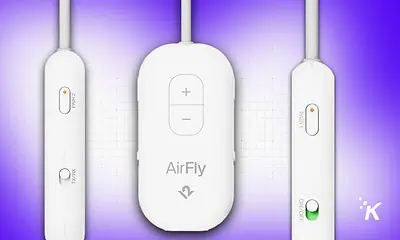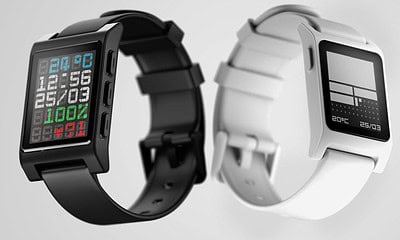Gadgets
Review: Fitbit Versa
For quite a while now, Fitbit has insisted that more advanced health trackers were coming, and now finally, that’s where the Fitbit Versa comes into play.
Just a heads up, if you buy something through our links, we may get a small share of the sale. It’s one of the ways we keep the lights on here. Click here for more.
Fitbit is a huge company – with more than 25 million active users, it still controls almost 20% of the wearables market – however, it desperately needs a hit. The Fitbit Iconic didn’t sell as some people expected it to and Apple is now officially back at the number one spot in the global wearables market with its highly popular Apple Watch.
For quite a while now, Fitbit has insisted that more advanced health trackers are coming – wearables that could possibly help you keep track of your glucose levels and deal with sleep apnea. However, they still need something that will sell immediately.
And that’s where the Fitbit Versa comes into play.
What is the Fitbit Versa?
In February 2017, Fitbit acquired Pebble, the company took credit for officially kick-starting the smartwatch industry a few years ago. Fitbit did this in an effort to obtain Pebble’s software assets. This acquisition heavily influenced the design of Fitbit Iconic, which features some of the classic Pebble features and even the company’s recognizable buttons.
But like we mentioned before, the Iconic failed to make an impact on the industry. And that’s why Fitbit is trying to correct their mistakes with their new smartwatch. While the iconic had a more “boxy” design, the Versa looks like something Pebble would produce. In addition, the Versa has a more up-to-date look than the classic Pebble Time.
It’s actually a sleeker, stripped-down version of the Iconic smartwatch. Supposedly the battery can last for three to four days on just one charge – which probably feels like a thumb in Apple’s eye. Moreover, the Versa is more visually appealing than the Iconic, and costs significantly less. Therefore, it’s supposed to have mass-market appeal.
The Differences between Versa and Iconic
The second Fitbit smartwatch offers many of the same features its predecessor had such as changeable straps, 100-foot-deep water resistance, and an HD touch display. However, the company is also introducing some brand new features to its platform. Here are the main differences between the two:
- Fitbit Versa is noticeably lighter and slimmer
- It has a significantly longer battery life
- The screen is brighter on this model
- Versa is available in more colors
The only downgrade from the previous model is the lack of GPS. Both of these smartwatches have an accelerometer, altimeter, and gyroscope, but the Versa can’t track your distance or accurately log your location on its own. In order to have any GPS data, you need to connect your smartwatch to your phone.
Furthermore, both run on the same platform, but the Versa is ushering the 2.0 version of the Fitbit OS. By swiping up on your screen, the OS takes to a health dashboard that shows your vital stats. Also, there’s an exciting new feature called “female health tracking” that allows women to track their monthly cycles and look out for changes and variations.
What are the Biggest Benefits?
Possibly the best aspect the design is how light the Versa is and how flat it lies against your wrist. Since there is no bulging underside, the watch feels perfectly comfortable. As a matter of fact, it’s easy to wear it 24/7 and forget that you have it on.
What’s more, one of Fitbit’s selling points is that its devices are compatible with different OS’. The same rings true with their second smartwatch. You can connect it to an Android phone, iPhone, and even a Windows phone.
The watch tracks everything you would expect a Fitbit to track – including calories burned, steps, distance traveled, and a number of different exercises. You even have exercise shortcuts on the main screen. You can customize these shortcuts, and have access to your favorite exercises with a single tap.
Are There Any Negative Aspects?
Let’s get this right out the way – the way the Versa handles notifications is pretty bad. Text notifications are particularly frustrating if you’re an iPhone user. For instance, there is no way to respond to text messages, because the watch doesn’t have a microphone or a speaker.
Even though the company plans on rolling out quick replies for Android users in the next few months, there are still issues with the way notifications are displayed on the screen. Rather than taking priority over the whole screen, they roll down from the top, and the actual text is too small, making it extremely difficult to read.
The watch allows you to expand the notifications by swiping left on the screen, but the size of the text remains exactly the same. Basically, there’s no way of reading your text messages without squinting. What’s worse, when you get a notification about a multimedia message, it doesn’t display the media.
On the other hand, call notifications are rather fluid. At least, you can easily accept and reject calls from the Versa, no matter what smartphone you own. But overall, the notification experience will make you wonder what these watches are actually for: are they strictly for fitness or are they supposed to do everything a phone does?
In essence, the Versa is a fitness gadget that offers some of the basic functionalities of a smartphone.
The Bottom Line
In the end, is the Fitbit Versa really worth your money? Of course, there’s the obvious comparison with the Series One Apple Watch. For starters, the Versa is cheaper than Apple watch, it has a similar feature list, and it works with both Android- and iOS-powered phones
However, if you’re a strict Apple user, the overall application experience on the Series One is much, much better than the experience on the Versa. For instance, the Series One allows you to pay for products, integrate your data with Apple Health, and even unlock your MacBook from your wrist.
Although Fitbit will probably have a hard time luring diehard Apple fans, the company actually has a nice chance of attracting the average consumer. One thing is certain – the Fitbit Versa will probably become pretty popular among Android users since Google’s smartwatch platform has stagnated significantly.
Did you get your hands on the all-new Fitbit Versa? How do you like it? Let us know what you think down below in the comments!





































